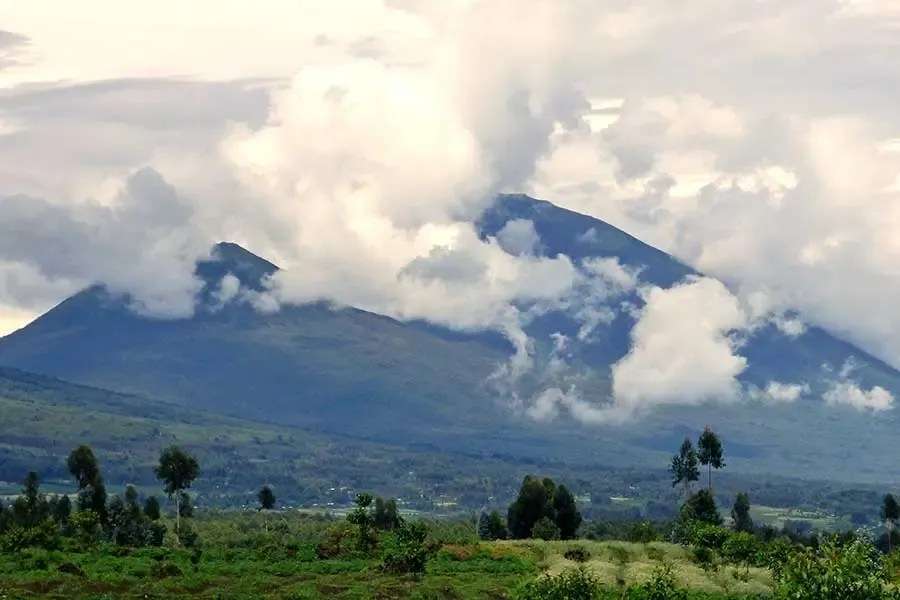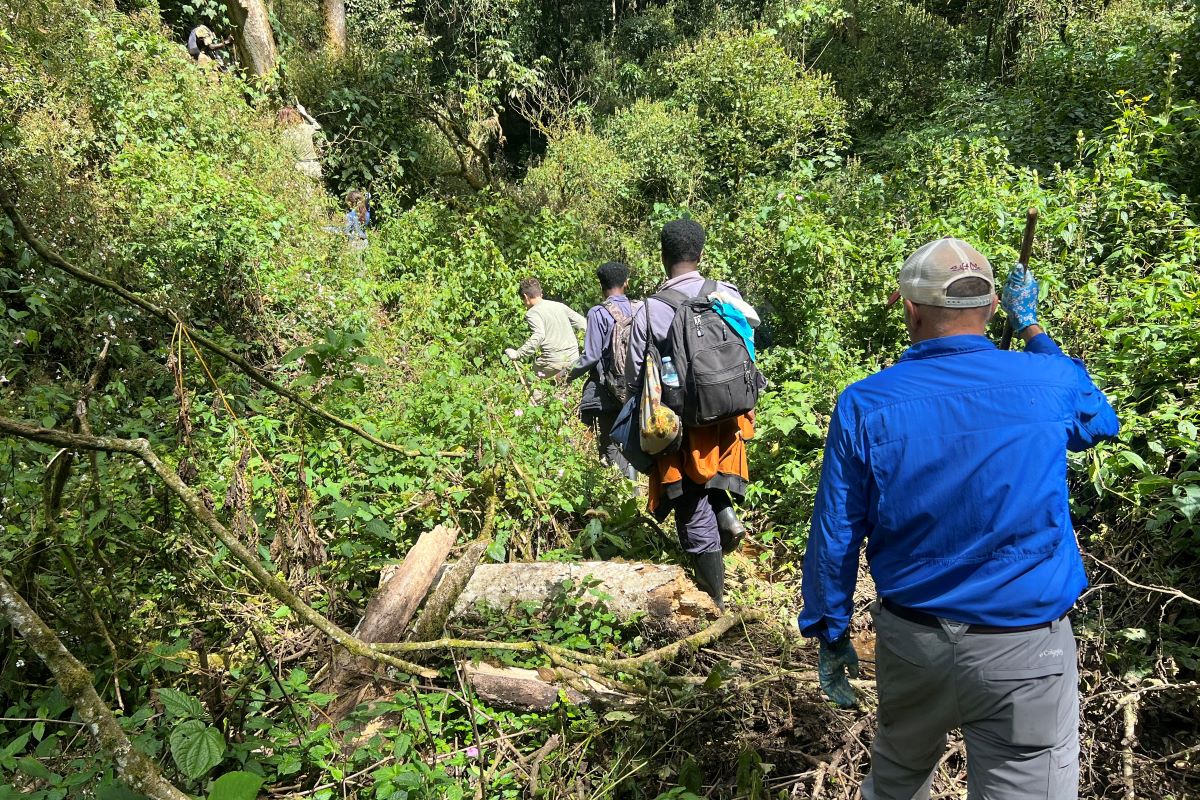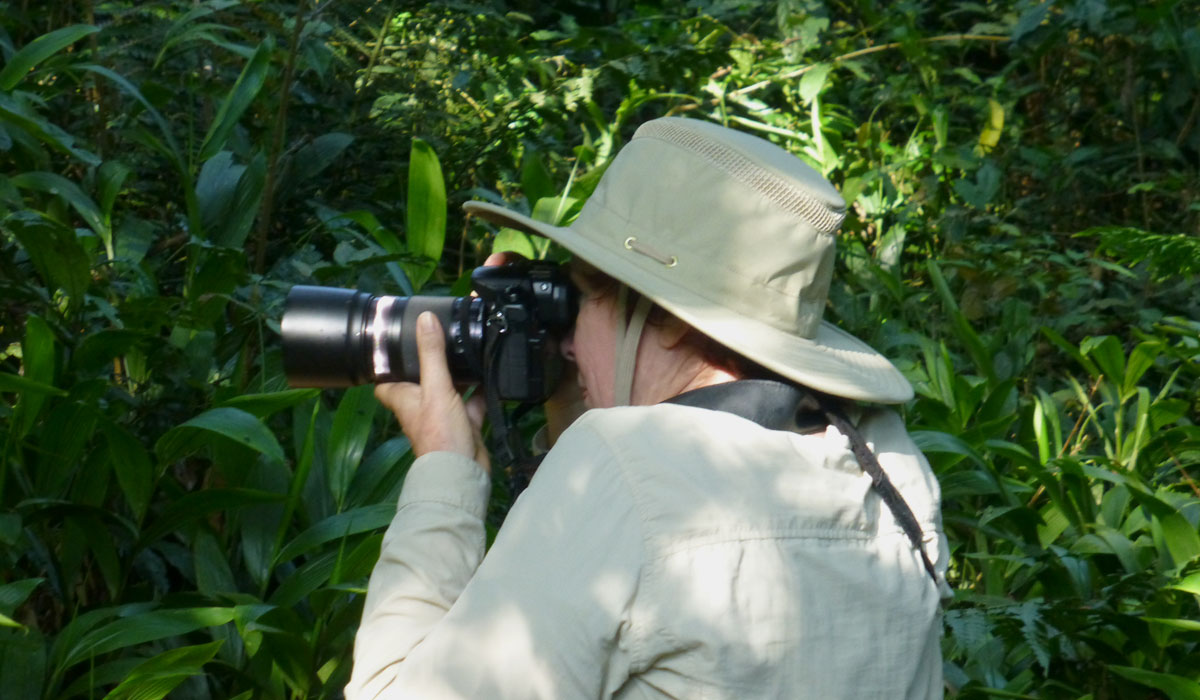Over the years gorilla trekking (tracking) has been the number one activity for most tourists who travel to Uganda and Rwanda.
Gorilla tracking, an extraordinary adventure that brings you face-to-face with one of our planet’s most magnificent creatures, offers a unique opportunity to witness the incredible world of gorillas in their natural habitat. It involves trekking into the forested areas with an experienced guide in search of these gentle giants.
![]()
This is the ultimate resource to prepare you for your gorilla tracking experience in Uganda and Rwanda.
Bwindi Impenetrable National Park is located in southwestern Uganda, near the border with the Democratic Republic of Congo and Rwanda. This is the main destination for gorilla tracking in Uganda.
There are a few Mountain Gorillas left in the world and around half of those live in Bwindi Impenetrable Forest alone. Here are the specific regions within Bwindi where gorilla tracking takes place:
Mgahinga is smaller than Bwindi and is also located in southwestern Uganda, near the borders of Rwanda and the Democratic Republic of Congo. It is part of the Virunga Massif, a transboundary conservation area, a transboundary conservation area that spans Rwanda, Uganda, and the Democratic Republic of Congo.
Mgahinga Gorilla National Park has one habituated gorilla group called the Nyakagezi group and offers a more intimate gorilla tracking experience since it is less crowded. However, gorillas frequently move across borders between Mgahinga and neighboring parks in Rwanda and Congo.

Volcanoes National Park is located in the northwestern part of the country, near the border with Uganda and the Democratic Republic of Congo. Volcanoes National Park is also part of the larger Virunga Massif.
The park is home to several habituated gorilla families, allowing visitors to track and observe these magnificent creatures in their natural habitat.
The park is divided into sectors, each with its own habituated gorilla groups. Some well-known groups include Susa, Sabinyo, Amahoro, Kwitonda, Hirwa, and Ugenda.
The best time to go gorilla trekking in both Uganda and Rwanda is during the dry seasons, which offer more favorable trekking conditions and a higher chance of a successful and enjoyable experience. It essential to be prepared for varying weather conditions, even during the dry season, as rain can occur at any time in the tropical rainforests where gorillas live.
The main dry seasons in Uganda are from late December to early February and from June to August. These months are considered the best time for gorilla trekking because the trails are drier, and the weather is generally more predictable.
The rainy seasons in Uganda are from March to May and from October to November. While gorilla trekking is still possible during these months, the trails can be muddy and slippery, making the trekking more challenging.
The dry seasons in Rwanda occur from mid-December to early February and from June to September. During these periods, there is less rain, and the trails are more accessible for trekking. The weather is usually pleasant, making it an ideal time for a gorilla trekking adventure.
The long rainy season in Rwanda occurs from October to November, and it’s generally less ideal for gorilla trekking due to the heavier rainfall and potentially difficult trail conditions. There is a shorter rainy season in Rwanda from mid-March to mid-May. While gorilla tracking is still possible during this period, it can be wetter, and trekking conditions may be a bit more challenging.
Gorilla trekking permits are required for anyone who wants to go gorilla trekking. The permits help regulate the number of visitors to protect the endangered mountain gorillas and their habitats.
Rwanda is known for its relatively high gorilla trekking permit fees. The cost for a gorilla trekking permit in Rwanda was $1,500 per person.
Uganda offers a more budget-friendly option for gorilla trekking. The cost of a gorilla trekking permit in Uganda is $700 per person.
The cost of a gorilla trekking permit typically includes the services of a park ranger guide and the opportunity to spend one hour in the presence of a habituated gorilla group.
Here is a full article that will teach you much more about gorilla tracking permits.

Gorilla trekking is an exciting adventure, but it does come with certain physical demands. Here’s what you need to know:
To ensure the safety of both the gorillas and visitors, some strict guidelines and rules must be followed during gorilla trekking. Here are some general guidelines you should be aware of:

Take a look at this full article that explores the complete packing list for gorilla trekking. The article explains why some items are essential and which ones can be skipped over.
Gorilla trekking is a great safari activity. Understanding every aspect of gorilla tracking can seem quite overwhelming. We have many resources on this website that are intended to help you understand all the aspects of this activity.
In case you have more questions or require a bit of clarification, feel free to contact us and our team will gladly help you.
Here are some all-inclusive safari packages that include tracking gorillas in Uganda or Rwanda. The tours below are randomly selected but they will give you a clear idea of how a typical gorilla safari flows.
We encourage you to look at more articles on our website or even talk to us. Someone on our team can help you and answer any questions you might have.
